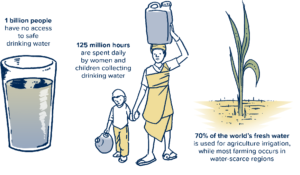
I. Introduction
1. Overview of the Global Clean Water Crisis
Affecting billions of people globally, the global clean water dilemma is a critical one. The UN World Water Development Report 2024 states that 3.5 billion people lack safely controlled sanitation facilities, and another 1-2.2 billion people lack access to clean drinking water.
Factors including population growth, climate change, and inadequate resource management aggravate this situation and cause more water shortages and competition for water supplies. In underdeveloped countries, where poor infrastructure and government impede access to clean water, the issue is especially severe and promotes social unrest, economic instability, and health emergencies.
2. Identification of Countries Facing Severe Clean Water Scarcity
Particularly in areas where water supplies are already strained, several countries are suffering significant clean water scarcity. Notable instances include:
- Somalia: Conflict and protracted droughts aggravate the severe water scarcity the nation experiences, resulting in major humanitarian catastrophes.
- Sudan: Ongoing conflicts and climate change aggravate the water shortage in Sudan, therefore influencing agricultural output and the availability of safe drinking water.
- Ethiopia: Particularly in rural regions, fast population growth and climate change have taxed water supplies.
- Zambia: Severe drought conditions affecting water supply have the country in a state of emergency.
- Afghanistan: Many villages lack access to safe water sources, and ongoing violence and inadequate infrastructure help to explain the general water shortage.
These countries represent the more general patterns of water scarcity endangering public health, food security, and social stability in fragile areas. Dealing with these issues calls for focused plans based on local settings that support sustainable water use.
II. Strategies to Address Clean Water Non-Availability
- Strengthening Water Governance and Management
- Using integrated water resources management (IWRM) would help to guarantee fair distribution of water resources and improve cooperation among the stakeholders.
- Establishing unambiguous legal frameworks and policies supporting sustainable water use and safeguarding water sources against contamination and over-extraction.
- Investing in Water Infrastructure
- distributing funds, especially in rural and underprivileged areas, to develop and repair water supply and sanitation infrastructure.
- Attracting money for water projects by means of creative financing mechanisms, including public-private partnerships (PPPs),.
- Promoting Community-Led Initiatives
- enabling nearby populations to use participatory planning and decision-making to assume responsibility for water management.
- Supporting grassroots groups working on locally specific water conservation and sanitation initiatives.
- Enhancing Water Quality Monitoring and Treatment
- building strong monitoring systems for water quality to quickly find and fix problems with contamination.
- Funding reasonably priced water treatment technology, such as solar-powered filtration devices, can help guarantee access to safe drinking water.
- Implementing Climate-Resilient Practices
- Creating water management plans sensitive to climate change that consider how it will affect water quality and availability.
- Encouragement of environmentally friendly farming methods that lower water usage and improve soil condition, like rainwater collection and drip irrigation,.
- Fostering International Cooperation
- Promoting transboundary water-sharing agreements will help to sustainably and fairly manage common resources.
- Using technical knowledge and financing for water projects in underdeveloped countries by means of international organizations and NGOs.
- Raising Awareness and Education
- running public awareness programs to inform local populations on the need for clean water access, water conservation, and hygienic habits.
- Including water education in curricula will help to build a society of water stewardship among the next generation.
Dealing with clean water non-availability in underdeveloped countries calls for a multifarious strategy combining government, infrastructure development, community involvement, and international cooperation.
These approaches will help stakeholders guarantee that everyone has access to trustworthy and clean water supplies, increasing public health, strengthening resilience to climate change, and supporting sustainable development.
The seriousness of this task is impossible to overestimate since the results of delay would keep aggravating already existing inequality and endangering world stability.
III. Causes of Clean Water Non-Availability
1. Climate Change and Drought
Particularly in areas already experiencing water stress, climate change is a major driver of clean water non-availability. Rising temperatures, changed precipitation patterns, and the frequency and intensity of extreme weather events such as droughts are upsetting the natural water cycle and reducing the availability of freshwater supplies.
While floods could damage water resources with pollutants and silt, they can also cause surface and groundwater sources to run dry. These effects of climate change disproportionately affect underprivileged groups, therefore aggravating current disparities in access to fresh water.
2. Population Growth and Urbanization
Urbanization and fast population increase are putting hitherto unheard-of pressure on few resources. The requirement for water for household, agricultural, and industrial use rises along with population.
Many developing countries have fast expanding urban centers that often exceed the capacity of their water systems to meet rising demand. Water shortages follow from this, especially in low-income areas and informal settlements where access to pure water is already restricted.
Because more wastewater is produced without enough treatment facilities, population growth also fuels higher water contamination.
3. Water Infrastructure Inadequacy
Many poor countries’ access to clean water is greatly hampered by inadequate water infrastructure. Through leaks and inefficiencies, aging or poorly maintained pipes, treatment facilities, and distribution systems cause notable water losses.
In rural places, the lack of basic infrastructure—such as wells and water points—means that populations can depend on dangerous water sources. Inadequate investment in water infrastructure, especially in underdeveloped countries, has exacerbated the clean water issue, leading to a rising demand-supply discrepancy.
4. Pollution and Contamination
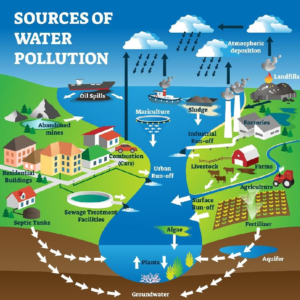
Significant causes of the non-availability of pure water are pollution and contamination of water sources. Pathogens, heavy metals, and dangerous chemicals can find their way into water supplies from treated sewage, agricultural runoff, and industrial waste. Many water sources made unfit for human consumption or agricultural use by this contamination cause health issues and lower food output.
Certain naturally occurring pollutants, like arsenic and fluoride, impair water quality even more. Particularly in underdeveloped countries with lax environmental rules and enforcement, inadequate wastewater treatment and inappropriate disposal of hazardous materials are the main causes of water contamination.
Together with social inequities and poor government, these interrelated elements have produced a complex and multifarious clean water dilemma in underdeveloped countries.
Dealing with these issues calls for a thorough strategy that addresses the underlying causes of water contamination and shortage while advancing fair and sustainable access to pure water for all.
IV. Short-Term Strategies (2024-2028)
1. Water Conservation and Efficiency Measures
Maximizing the utilization of current water resources depends on the implementation of water conservation and efficiency measures, particularly in areas suffering from extreme water shortages. Important plans include the following:
- Public Awareness Campaigns: By means of seminars, media campaigns, and school activities, communities should be educated on the need for water conservation. This will help inspire responsible water use. Simple habits, including leak repairs, water-efficient fixture use, and rainwater collection, help to greatly lower water consumption.
- Incentives for Water-Saving Technologies: Governments and non-governmental organisations (NGRs) might offer financial incentives—such as subsidies or tax breaks—for homes and companies that make investments in water-efficient appliances, irrigation systems, or technologies. Low-flow toilets, drip irrigation systems, and greywater recycling systems can all fit here.
- Regulatory Measures: Adopting rules requiring water-saving methods in urban development, industry, and agriculture can help to guarantee effective usage of water resources. This can entail mandating the installation of liquid-efficient technologies in newly constructed buildings or imposing restrictions on water consumption during drought seasons.
2. Emergency Water Supply Solutions
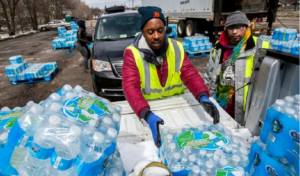
Emergency water supply systems can give impacted populations temporary relief in cases where quick access to clean water is very vital. Strategies include:
- Water Trucking: Immediately, assistance can come from sending water trucks to places suffering severe shortages to provide potable water. During prolonged droughts or in areas devastated by calamities, this solution is especially helpful. Ensuring fair distribution calls for cooperation with local authorities and community organizations.
- Bottled Water Distribution: Bottled water is distributed in individual, hermetically sealed bottles, ensuring safety from production to consumption. The bottles are transported via trucks, rail, or ships to retailers or directly to consumers.
- The distribution of bottled water is typically viewed as a short-term emergency measure. It is often utilized in situations where public drinking water is unavailable or unsafe, such as during natural disasters or contamination events. Long-term solutions should focus on establishing sustainable water sources.
- Mobile Water Treatment Units: In an emergency, deploying mobile water treatment equipment might assist in cleaning contaminated water supplies. By purifying possibly contaminated surface or groundwater, these machines can rapidly offer clean drinking water.
3. Water Treatment and Purification Technologies

Improving water quality and guaranteeing access to safe drinking water depend on investments in water treatment and purification technology. Important strategies consist of:
- Point-of-Use Water Treatment Systems: Affordable point-of-use water treatment systems, including solar disinfection kits, UV purifiers, and ceramic filters, will enable homes to clean their water right at the source. Rural and low-income areas would find this low-cost, simple-to-use technology appropriate.
- Community Water Treatment Facilities: Establishing small-scale community water treatment plants will help to supply clean drinking water for larger populations. To guarantee water purity, these facilities can run reverse osmosis, filtration, and chlorine, among other treatment processes.
- Investment in Research and Development: Supporting research into creative water purification technologies can help produce more reasonably priced and successful answers. To handle particular contamination problems, this covers investigating nanotechnology, cutting-edge filtration systems, and bioremediation methods.
Vulnerable countries can solve immediate clean water access issues by using these short-term plans from 2024 to 2028, therefore setting the foundation for more sustainable long-term solutions. These initiatives will be absolutely vital in reducing the effects of water scarcity and guaranteeing that every community has access to dependable and clean water supplies.
V. Medium-Term Strategies (2028-2035)
1. Infrastructure Development (e.g., Pipelines, Storage Facilities)
Reliable access to fresh water in underdeveloped countries depends on strong water infrastructure investments. Medium-term plans should concentrate on:
- Building and Upgrading Pipelines: The development of new pipelines and the rehabilitation of existing ones to reduce water loss due to leaks and inefficiency is vitally necessary. This includes applying modern materials and technologies designed to reduce maintenance costs and extend their lifetime.
- Constructing Storage Facilities: Constructing enough water storage facilities, such reservoirs and tanks, helps to regulate seasonal variations in water supply and demand. These structures are absolutely necessary for collecting and storing rainwater for use in dry seasons.
- Integrating Smart Technology: Including smart technology—such as sensors and data analytics—into infrastructure development helps to monitor and control water distribution systems. More effective operations and timely identification of problems such as leaks or contamination can follow from this.
- Prioritizing Resilience: Giving resilience first priority could help infrastructure projects be built to resist the effects of climate change, including drought and flooding. To improve water management, this entails including natural infrastructure solutions such as green rooftops and permeable pavements and adopting climate-resilient building materials.
2. Water Reuse and Recycling Programs
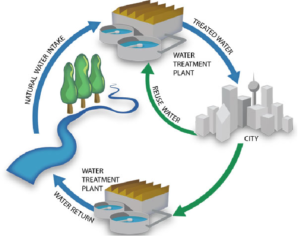
Reversing water shortage by means of water reuse and recycling projects is a sustainable method Techniques comprise:
- Developing Greywater Recycling Systems: Encouragement of greywater recycling systems in homes and businesses will help to greatly lower freshwater demand. This entails irrigation and toilet flushing using water from sinks, showers, and washing machines.
- Establishing Centralized Reuse Facilities: Building centralized water treatment facilities able to handle wastewater for safe reuse in agricultural irrigation, industrial operations, or landscape care will help to relieve strain on freshwater supplies.
- Promoting Public Awareness: Encouragement of public awareness of the advantages of water reuse and recycling helps communities embrace and participate in these projects. Public advertising should stress effective case studies and offer direction on water-saving technology applications.
- Incentivizing Participation: Offering financial incentives or subsidies for homes and companies implementing water reuse technologies can help to promote general adoption and support overall water conservation initiatives.
3. Desalination and Brackish Water Treatment
Critical technologies for improving water supply in areas with limited resources include desalination and brackish water treatment. Plans should concentrate on:

- Investing in Desalination Plants: Developing desalination plants, especially in coastal locations, can provide a consistent supply of freshwater. Technology has advanced to allow for solar desalination and reverse osmosis, therefore improving efficiency and lowering prices.
- Exploring Brackish Water Resources: Treating brackish water from sources, including estuaries and aquifers, can help augment freshwater supplies. Using reasonably priced treatment technology will help communities make use of these underused resources.
- Integrating Renewable Energy: Combining desalination and brackish water treatment facilities with renewable energy sources, such as solar or wind power, can help to lower the running expenses and environmental effects of these operations.
- Ensuring Environmental Sustainability: Evaluating and reducing the effects of desalination and brackish water treatment—including brine disposal—is crucial for environmental sustainability. Developing plans for sensible brine control and local ecosystem monitoring will help preserve marine habitats.
Implementing these medium-term plans between 2028 and 2035 will help underdeveloped countries strengthen their water supply resilience and provide sustainable access to pure water for their people. These initiatives will be very vital in tackling the continuous problems presented by population growth, climate change, and poor infrastructure.
VI. Long-Term Strategies (2035–2050)
1. Sustainable Water Management Practices
Implementing sustainable water management practices is essential for ensuring long-term access to clean water, particularly in the face of climate change and increasing demand. Key strategies include:
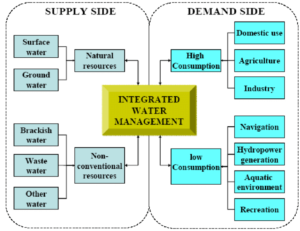
- Integrated Water Resources Management (IWRM): This approach promotes the coordinated management of water, land, and related resources to maximize economic and social welfare without compromising the sustainability of vital ecosystems. IWRM involves stakeholder participation, ensuring that all voices, especially those of marginalized communities, are heard in decision-making processes.
- Water-Energy-Food Nexus: Recognizing the interconnections between water, energy, and food production is crucial for developing holistic policies that optimize resource use. Strategies should aim to enhance the efficiency of water use in agriculture, promote renewable energy sources for water treatment and distribution, and ensure sustainable food production practices.
- Ecosystem-Based Management: Protecting and restoring natural ecosystems, such as wetlands and forests, can enhance water quality and availability. These ecosystems play a vital role in regulating water cycles, filtering pollutants, and providing habitat for biodiversity.
2. Watershed Protection and Restoration
Protecting and restoring watersheds is critical for maintaining clean water supplies and enhancing resilience to climate change. Strategies include:
- Watershed Management Plans: Developing comprehensive watershed management plans that integrate land use, water quality, and ecosystem health can help protect water resources. These plans should involve local communities in monitoring and managing watershed health.
- Reforestation and Afforestation: Planting trees and restoring natural vegetation in watershed areas can improve water retention, reduce soil erosion, and enhance water quality. Forests act as natural filters, capturing rainfall and allowing it to percolate into the ground.
- Pollution Control Measures: Implementing regulations to control agricultural runoff, industrial discharges, and urban stormwater can help protect water quality in watersheds. This includes promoting sustainable agricultural practices, such as organic farming and reduced pesticide use.
- Community Engagement: Involving local communities in watershed protection efforts fosters a sense of ownership and responsibility for water resources. Education and awareness campaigns can empower communities to take action to protect their watersheds.
3. Climate-Resilient Water Infrastructure
Developing climate-resilient water infrastructure is essential for adapting to the impacts of climate change and ensuring long-term access to clean water. Key strategies include:
- Designing for Resilience: Water infrastructure projects should be designed to withstand extreme weather events, such as floods and droughts. This includes using durable materials, incorporating redundancy in systems, and planning for future climate scenarios.
- Decentralized Water Systems: Implementing decentralized water supply and treatment systems can enhance resilience by reducing reliance on centralized infrastructure. These systems can be more adaptable to local conditions and can provide immediate access to clean water during emergencies.
- Smart Water Management Technologies: Utilizing smart technologies, such as sensors and data analytics, can improve the efficiency and reliability of water distribution systems. These technologies can help detect leaks, optimize water use, and enhance decision-making in water management.
- Investment in Research and Development: Supporting research into innovative water management technologies and practices is crucial for developing climate-resilient solutions. This includes exploring new materials, treatment methods, and conservation techniques that can enhance water security.
By implementing these long-term strategies from 2035 to 2050, vulnerable countries can build a sustainable and resilient water future. These efforts will be vital in addressing the ongoing challenges posed by climate change, population growth, and inadequate infrastructure, ultimately ensuring that all communities have access to clean and reliable water resources.
VII. Innovative Solutions
1. Solar-Powered Water Purification

Solar-powered water purification systems are a promising solution for providing clean water in remote and off-grid areas. These systems utilize solar energy to power various water treatment technologies, such as reverse osmosis, ultraviolet disinfection, and membrane filtration. Solar-powered purification systems offer several advantages:
- Sustainability: By harnessing renewable solar energy, these systems reduce reliance on fossil fuels and minimize environmental impact.
- Cost-effectiveness: While initial costs may be high, solar-powered systems have low operating expenses and can provide long-term cost savings, especially in areas with high insolation.
- Scalability: Solar-powered purification can be implemented at various scales, from household units to large-scale community systems, making it adaptable to different contexts.
- Accessibility: Solar-powered systems can bring clean water to underserved communities that lack access to reliable electricity or centralized water infrastructure.
Examples of innovative solar-powered water purification technologies include:
- Solar-powered reverse osmosis desalination: This technology uses solar energy to power reverse osmosis membranes, enabling the treatment of brackish water or seawater for potable use.
- Solar disinfection (SODIS): SODIS involves exposing water-filled transparent bottles to sunlight for at least six hours, using UV radiation to inactivate pathogens.
- Solar-powered ultrafiltration: This method combines solar-powered pumps with ultrafiltration membranes to remove bacteria, viruses, and other contaminants from water.
2. Atmospheric Water Harvesting
Atmospheric water harvesting (AWH) is an innovative solution that extracts water vapor from the air to produce clean drinking water. This technology is particularly useful in arid regions with high humidity levels but limited access to surface water or groundwater. AWH systems use various techniques, such as condensation, adsorption, or absorption, to capture water vapor and convert it into liquid water.Key advantages of atmospheric water harvesting include:
- Water availability: AWH can provide a reliable source of water in areas with limited or contaminated surface and groundwater resources.
- Scalability: AWH systems can be designed for various scales, from small household units to large-scale community systems.
- Sustainability: Many AWH technologies utilize renewable energy sources, such as solar power, to operate, reducing environmental impact.
Examples of atmospheric water harvesting technologies include:
- Dew harvesting: This method uses condensation surfaces, such as mesh screens or plates, to collect water droplets from the air during cool nights or early mornings.
- Fog harvesting: Fog collectors, typically made of mesh screens, intercept fog particles and allow them to coalesce into water droplets that can be collected.
- Adsorption-based AWH: These systems use hygroscopic materials, such as silica gel or metal-organic frameworks, to adsorb water vapor from the air. The adsorbed water is then desorbed and condensed into liquid water using heat or pressure.
3. Artificial Intelligence for Water Management
Artificial intelligence (AI) and machine learning are transforming water management by enabling more efficient, data-driven decision-making. AI-powered systems can help optimize water distribution, detect leaks, predict demand, and identify potential contamination sources.
By analyzing vast amounts of data from various sources, such as sensors, satellite imagery, and historical records, AI can provide valuable insights for water managers and policymakers.Key applications of AI in water management include:
- Predictive maintenance: AI algorithms can analyze sensor data to predict when equipment failures or pipe bursts are likely to occur, allowing for proactive maintenance and reducing water losses.
- Demand forecasting: AI models can predict water demand based on factors such as weather, population growth, and economic activity, enabling more efficient allocation of water resources.
- Water quality monitoring: AI-powered systems can process data from water quality sensors and satellite imagery to detect and respond to contamination events in real-time.
- Optimization of water distribution: AI algorithms can help optimize the operation of water distribution networks, reducing energy consumption and ensuring equitable access to water.
Examples of AI-powered water management solutions include:
- Smart water meters: These devices use AI to analyze water consumption patterns and detect leaks, providing real-time feedback to consumers and utilities.
- Satellite-based water monitoring: AI algorithms can process satellite imagery to map surface water resources, monitor changes in water quality, and detect potential sources of pollution.
- Intelligent water treatment plants: AI-powered systems can optimize the operation of water treatment plants, adjusting chemical dosages and monitoring equipment performance to ensure consistent water quality.
Combining solar-powered purification, atmospheric water collection, and artificial intelligence-driven water management can help underdeveloped countries create creative, sustainable, and strong answers to solve clean water non-availability.
In view of rising water scarcity, these technologies provide the means to increase public health, widen access to clean water, and improve climate change adaptation.
VIII. International Cooperation and Funding
1. Global Partnerships and Funding Mechanisms
Dealing with the worldwide clean water issue calls for both large financial resources and international cooperation. To help water access projects in underdeveloped countries, several worldwide alliances and financing sources have been set up:
- The Global Water Security & Sanitation Partnership (GWSP): Launched by the World Bank in 2017, the Global Water Security & Sanitation Partnership (GWSP) seeks to enhance water security and increase climate resilience while lowering poverty and so promoting shared prosperity. Among its members, the alliance encourages information sharing, fund mobilization, and technical assistance.
- The Global Water Partnership (GWP): The International Water Partnership (GWP): GWP advances the efficient and sustainable use of water resources by means of a network including more than 3,000 partner companies spread over 180 countries. The alliance offers a forum for knowledge-sharing, technical support access, and global, regional, and country level water policy shaping ability.
- The Global Water Operators’ Partnerships Alliance (GWOPA): Through peer-to–peer interactions, sometimes known as Water Operators’ Partnerships (WOPs), the Global Water Operators’ Partnerships Alliance (GWOPA) helps water operators worldwide. These not-for-profit alliances seek to increase water providers’ capacity and performance so they may serve more people with better services.
- The Global Partnership for Education (GPE): Although not only focused on water, the GPE supports initiatives in partner countries, including the renovation of water and sanitation infrastructure in schools. Keeping children healthy and able to learn depends on access to safe water and working sanitation.
Leveraging the resources and knowledge of many stakeholders—including governments, international organizations, civil society, and the business sector—these worldwide alliances generate funds and promote water access projects in underdeveloped countries.
2. Technology Transfer and Capacity Building
In order to guarantee the sustainability of water access projects, effective international cooperation also entails technology transfer and local capacity building. Important techniques consist of:
- Technology Transfer: Encouragement of the transfer of creative water technologies—such as solar-powered purification systems, atmospheric water harvesting devices, and AI-powered water management solutions—will enable underdeveloped countries to leap forward from conventional development paths and access modern solutions to their water needs.
- Capacity Building: Investing in capacity building programs that equip local water professionals, community members, and government officials in fields including water infrastructure management, water quality monitoring, and integrated water resources management will help to improve the sustainability and efficacy of water access projects.
- Knowledge Sharing: Establishing venues for information sharing—such as online repositories, technical seminars, and peer-to-peer learning exchanges—helps distribute best practices, lessons learned, and creative ideas for addressing water access issues across developing countries.
- Institutional Strengthening: The encouragement of strong legislative and regulatory structures as well as the enhancement of water governance institutions would assist to guarantee the long-term viability of water access projects and hence support fair and effective water management.
Vulnerable countries can obtain the tools, technologies, and knowledge required to handle their clean water issues and guarantee universal access to this essential resource by using global collaborations, financing sources, and capacity building initiatives.
IX. Conclusion
1. Summary of Strategies to Address Clean Water Non-Availability
The ideas presented in this article offer a whole framework for tackling clean water non-availability in underdeveloped countries by 2024 and beyond. These approaches cover long-term sustainable water management techniques, medium-term infrastructure development, and temporary emergency response actions. Essential components consist of:
- Water conservation and efficiency measures to maximize the use of existing resources
- Investment in water treatment and purification technologies to improve water quality
- Development of robust water infrastructure to enhance supply and distribution
- Adoption of water reuse and recycling programs to reduce freshwater demand
- Implementation of sustainable water management practices to ensure long-term resilience
- Protection and restoration of watersheds to maintain water resources
- Development of climate-resilient water infrastructure to adapt to changing conditions
- Utilization of innovative solutions such as solar-powered purification and AI-driven management
- Strengthening of international cooperation and funding mechanisms to mobilize resources and support
2. Call to Action for Immediate Implementation
Vulnerable countries, supported by the international community, must prioritize implementing these policies to ensure that by 2024 and beyond, every person has access to dependable, clean water sources.
Ignoring them now will aggravate already existing disparities, jeopardize global stability, and slow down efforts toward the Sustainable Development Goals.We call upon governments, international organizations, civil society, and the business sector to:
- Prioritize investment in water access initiatives and allocate sufficient resources to support their implementation.
- Foster collaboration and knowledge sharing among stakeholders to accelerate progress and ensure the effectiveness of interventions.
- Empower local communities to participate in the planning, implementation, and management of water access initiatives.
- Promote the adoption of innovative technologies and support research and development in water management solutions.
- Strengthen water governance frameworks and promote sustainable water management practices at all levels.
Working together and acting now will help us to create a more fair, sustainable, and resilient future where everyone has access to clean water. Right now is the time to act.
X. FAQS
1. Describe environmentally friendly methods of managing clean water supplies.
Sustainable clean water management techniques comprise methods of pollution avoidance, efficient use, and conservation, thereby guaranteeing the long-term availability and quality of water resources.
2. Why is the management of clean water crucial for 2024 and beyond?
Dealing with rising water shortages, guaranteeing public health, promoting economic growth, and adjusting to climate change consequences all depend on effective management of clean water sources.
3. How may each person help to manage water sustainably?
People may help policies safeguarding water resources, save water at home, and promote the application of sustainable practices in their local areas.
4. How may governments help to manage water sustainably?
Policy implementation, infrastructural investment, and regulatory enforcement guaranteeing the sustainable use and protection of water resources fall to governments.

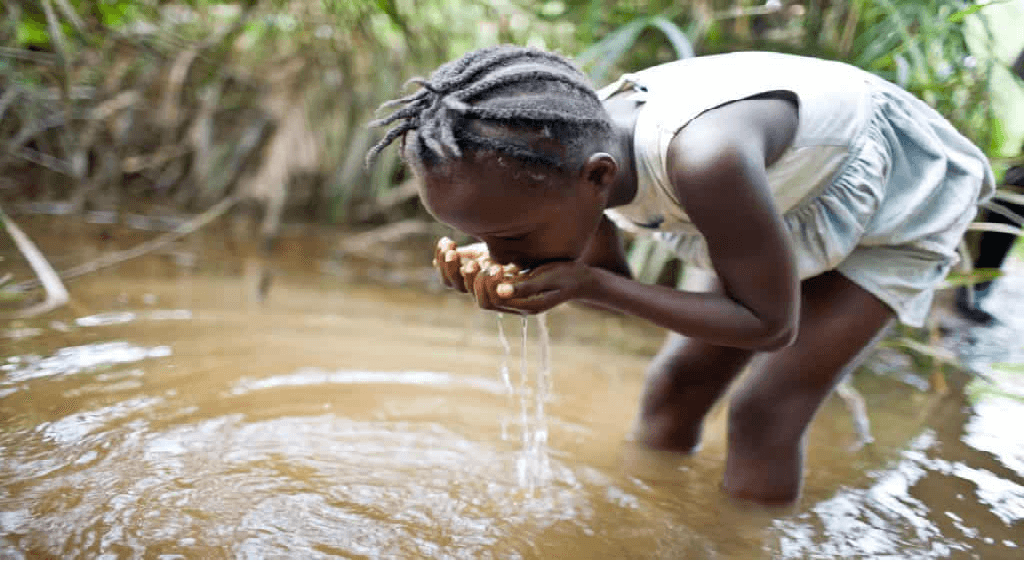
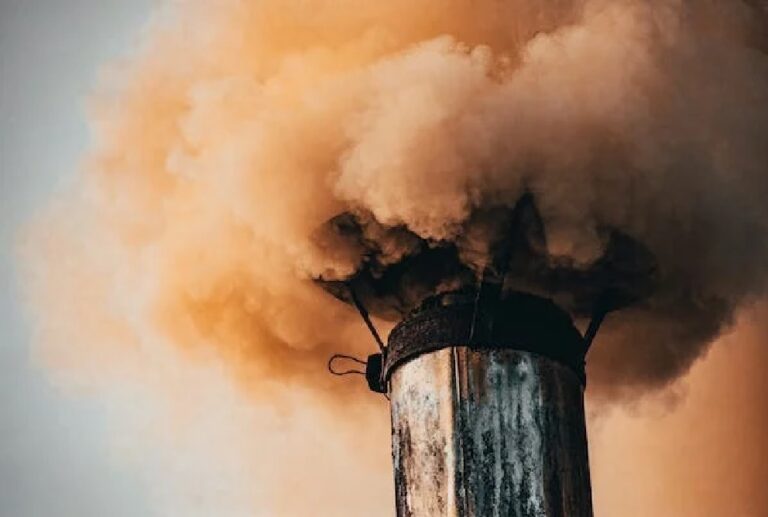
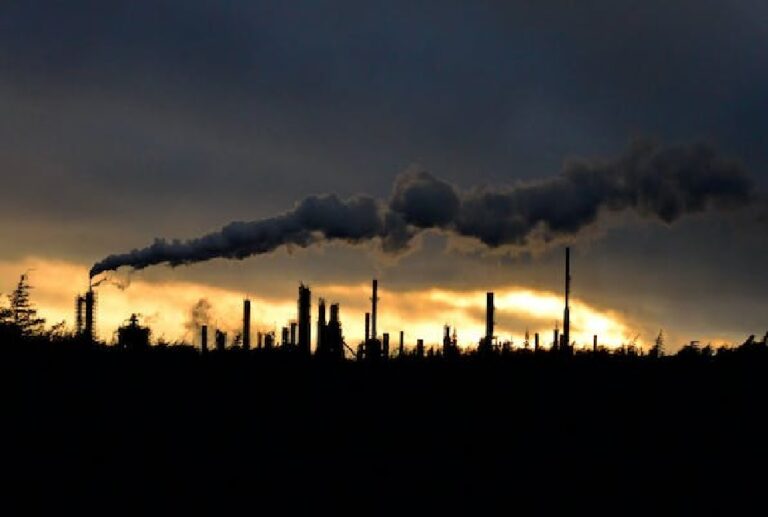

Tech Learner I like the efforts you have put in this, regards for all the great content.